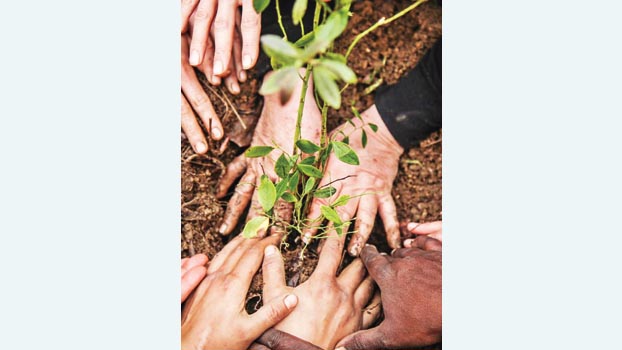Permaculture system likely to be a boon for Barind farmers

Permaculture, a system of sustainable agriculture, is now a need of the day to save the environment, ecological balance, depleting subterranean water and to procure food free from laced by harmful chemicals and pesticides. Mainly, the system of Permaculture at the water-scarce Barind region may prove a boon for farmers as well as people of the region.
Permaculture stands for permanent- agriculture. The term was first used by Bill Mollison and David Holmgren during the 1970s, as a contraction of permanent (sustainable) and agriculture.
In Permaculture, farmers instead of cutting down forests and destroying natural resources utilise them in a way that maximum output could be gained using the minimum input. So, the wastes turn into resources and work is done with nature instead of around or without it.
The first recorded practice of Permaculture as a systematic method was initiated by an Austrian farmer Sepp Holzer in the 1960s, but the method was developed later by Australians Bill Mollison and David Holmgren with their associates during the 1970s and those were mentioned in a series of publications.
Permaculture principles can be applied to any environment, at any scale from dense urban settlements to individual homes, from farms to entire regions. So, Permaculture has its roots dug deep in the environment-friendly agriculture, organic food production chain of reaction that has gripped the world now. One Permaculture specialist who is also a co-founder of the Green Circle Alliance (GCA) movement, an international environmental organisation, Kevin Schot says Permaculture gardens are easy to build as most resources needed are already in nature; also they are a very efficient way to produce and regenerate.
The Green Circle Alliance is a movement that promotes sustainable living in all forms. It specializes in Permaculture and green sustainable living styles following the earth charter.
Permaculture has a huge possibility in Bangladesh Kevin says, specially, in Barind areas where rainfall is scarce and water is needed to pump up from deep into the earth to support agriculture.
Kevin believes that it is possible to use Permaculture techniques and green the Barind areas without the help of projects like Barind Multipurpose Development Authority’s project which includes pumping out underground water for agriculture.The project can even work within houses for vegetable consumption and many are experimenting with the use of hydroponics and aquaculture.
By using Permaculture it is possible to get highest possible production from crops without using any fertilizers or chemical pesticides. As nature plays the part of pest control and nutrition for the trees. English permaculture teacher and author Patrick Whitefield suggests that there are now two strands of permaculture: Original and Design permaculture.
Original permaculture attempts to closely replicate nature by developing edible ecosystems which closely resemble their wild counterparts. Design permaculture takes the working connections at use in an ecosystem and uses them as its basis. The end result may not look as natural as a forest garden but still respects ecological.
Through close observation of natural energies and flow patterns, efficient design systems can be developed. This has become known as Natural Systems Design.
The design elements of a permaculture garden/forest are heavily dependent on the use of the ecological systems and the designs are made in such a way that it uses part or the whole ecology not affecting it in any adverse way.
Each element of a design is analyzed in terms of its needs, outputs, and properties so nothing goes to waste. Like designing an ecosystem Permaculture practitioners need to use one output for the input of the other part of their Permaculture garden. For instance, if a tree requires certain materials to grow fully, the Permaculture practitioners use certain other plants or animals to meet the need of that first plant.
The synergy between design elements is achieved this way while minimizing waste and the demand for human labour or energy. Permaculture designs evolve over time, and can become extremely complex that produce a high density of food and materials with minimal input.
The techniques are borrowed from organic agriculture, sustainable forestry, horticulture, agro forestry, and the land management systems of indigenous people and can be taught with brief intensive training.
Scientists term Permaculture the need of the time and some will go even as far as saying it’s the only way to evolve around nature in perfect synchronization.
As for Bangladesh Permaculture practice could lead to a revolution. Today where GM food and chemical fertilisers and pesticides seem to be a norm for the agriculture industry, Permaculture sparks hope for many millions of farmers, ecologists and consumers in Bangladesh alike.
Ahmed Niamur Rahman, Divisional Forest Officer of Rajshahi in this connection said, Permaculture has an immense possibility in the country but it requires training and convincing of people to use their land to be used for the system. He further mentioned, in government Khasland the Permaculture plots may be set up as demonstration plots so that people become interested to use their land for Permaculture practices.


